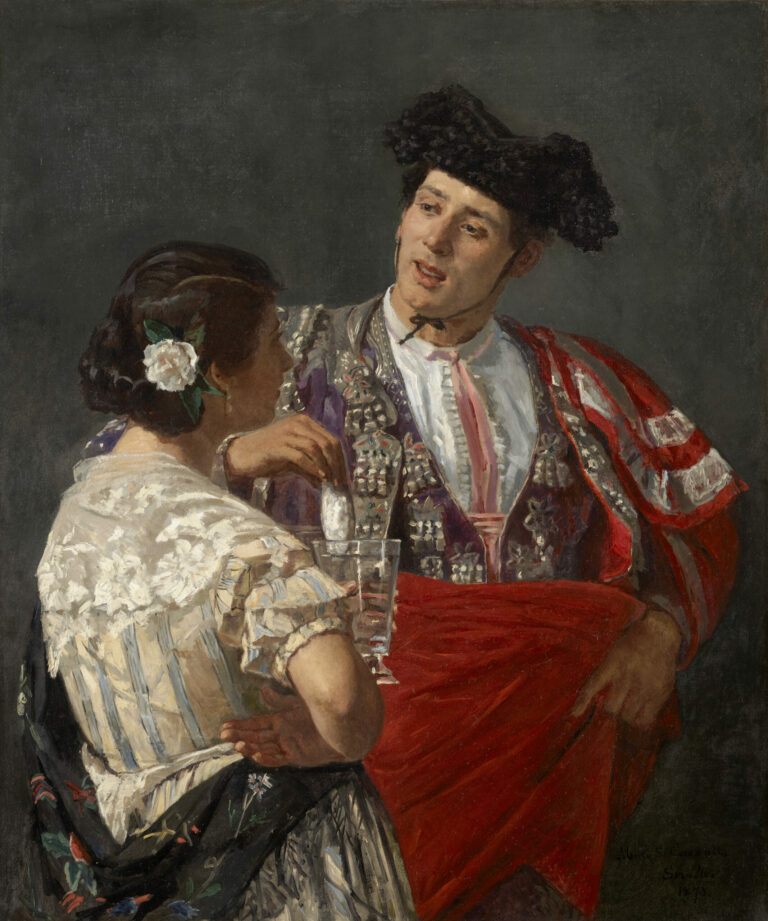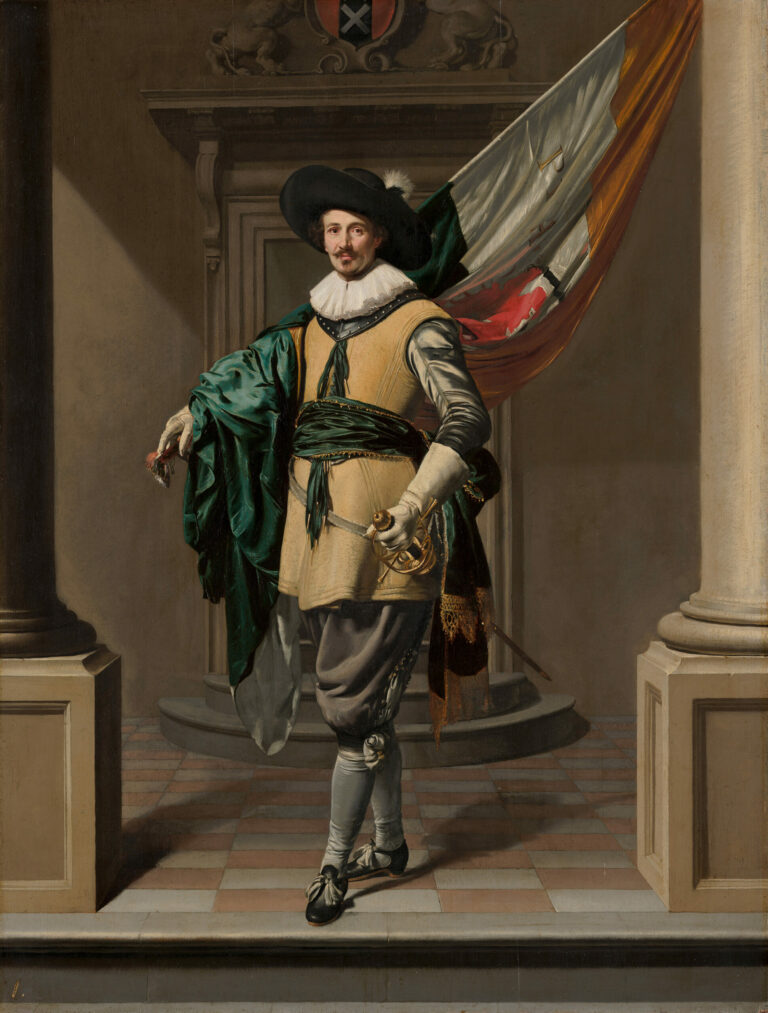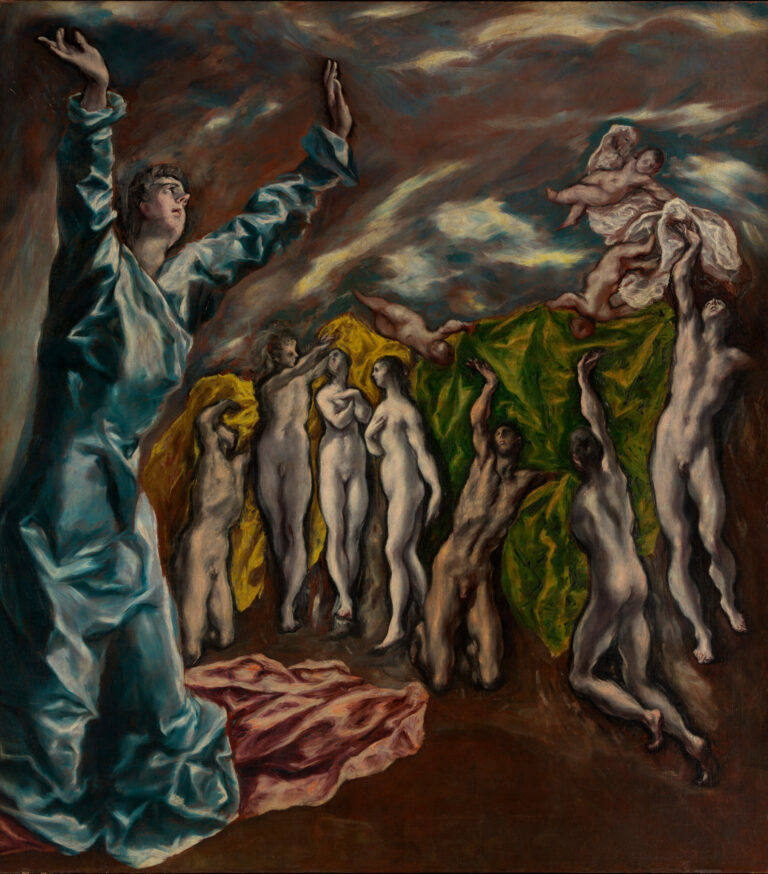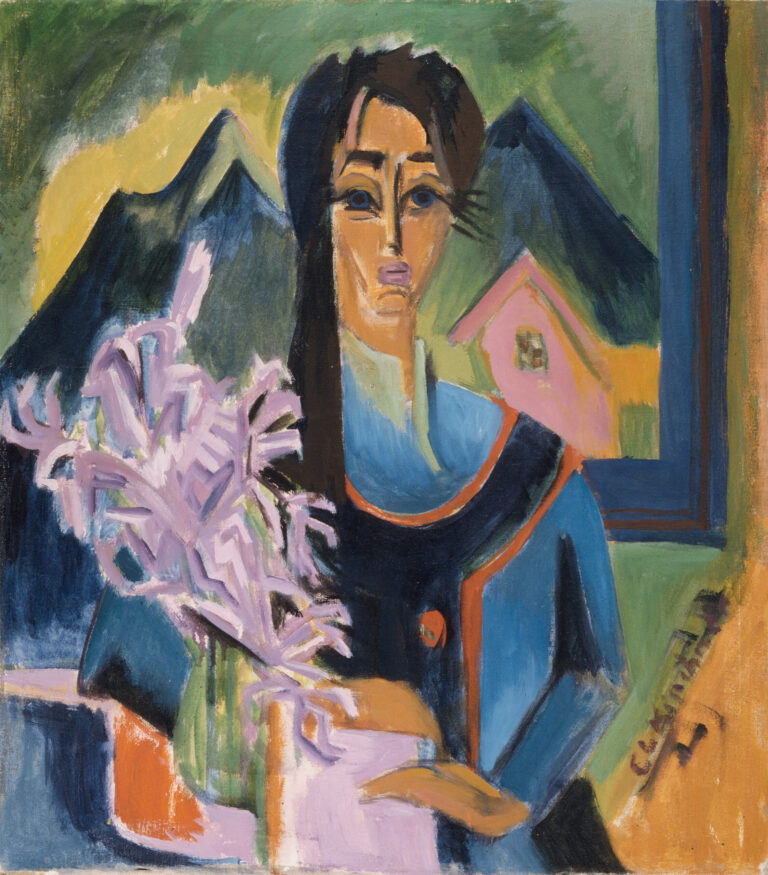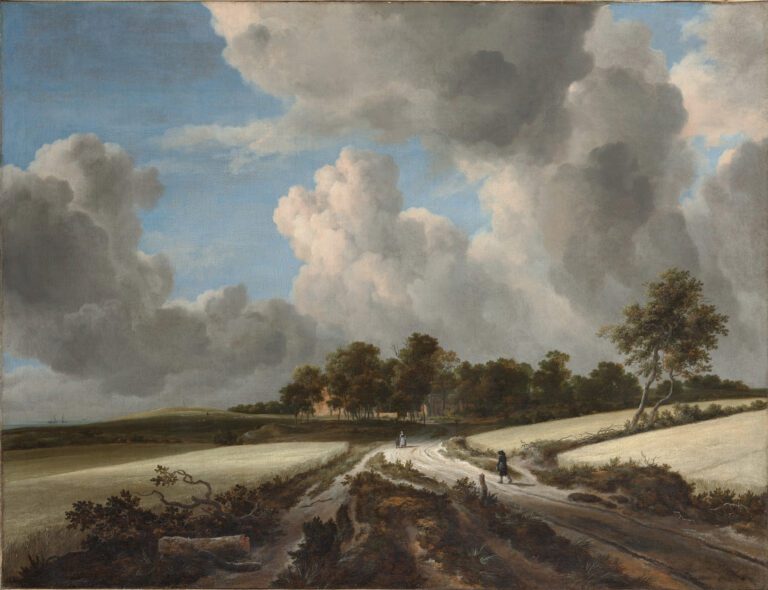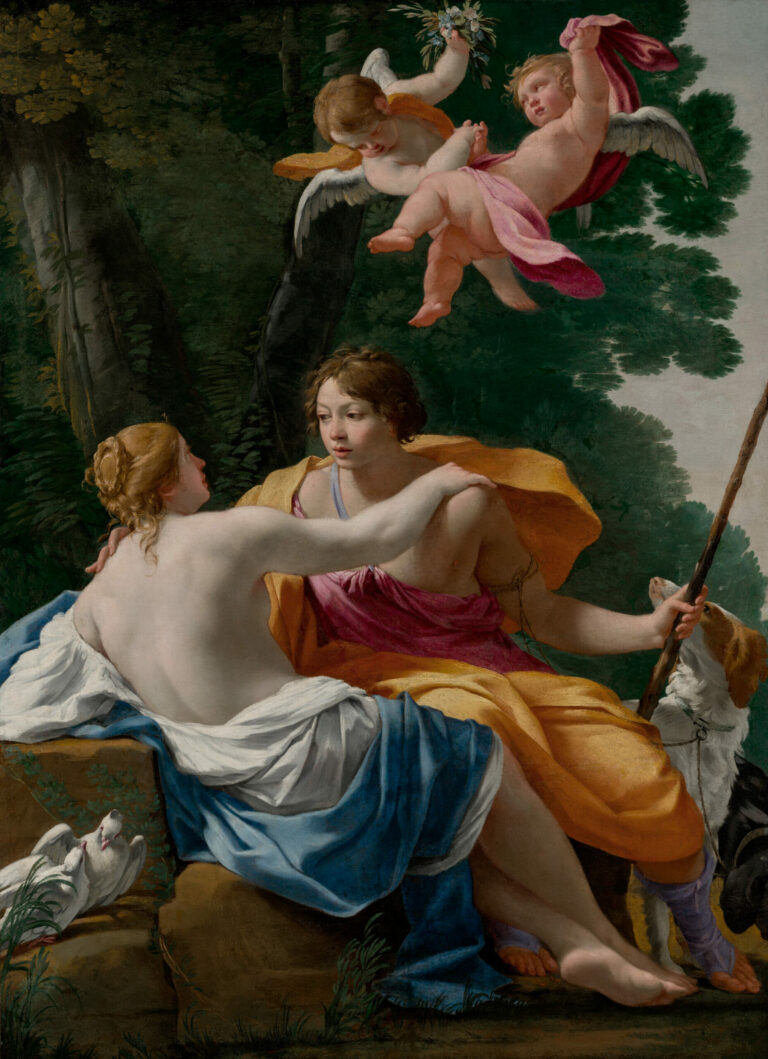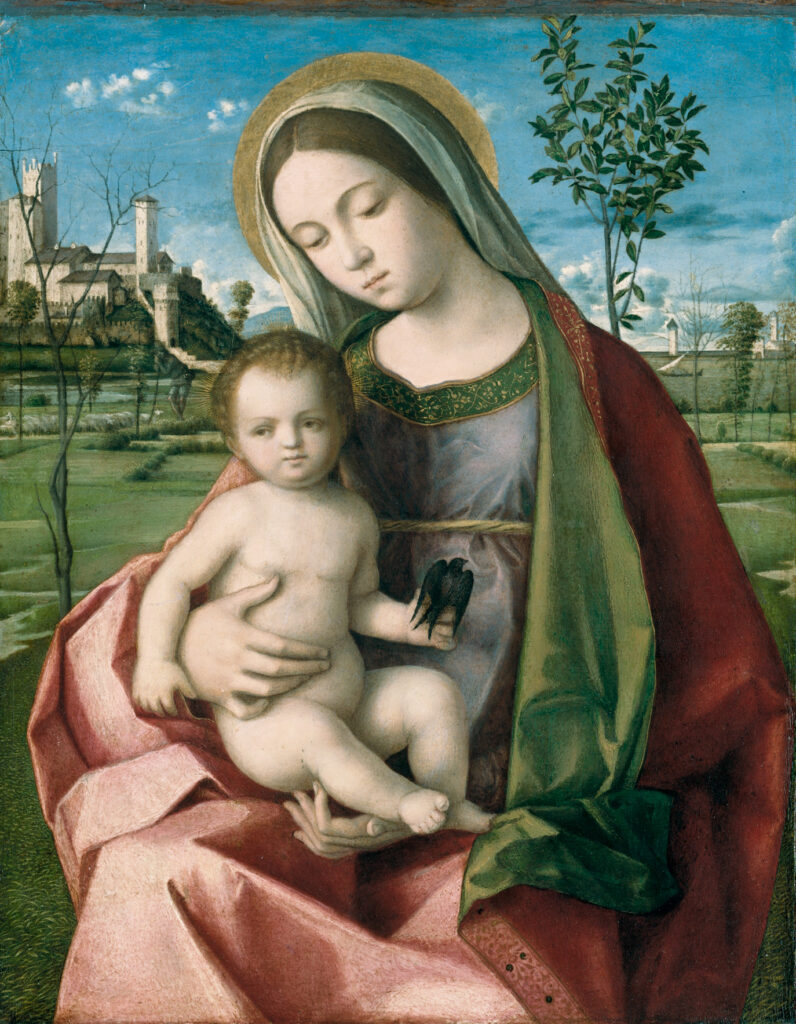
This “Madonna and Child” from Giovanni Bellini’s workshop, circa 1510, is characteristic of Venetian art for private devotion in the early Cinquecento.
The composition articulates spiritual intimacy and sacred grandeur: Mary, haloed in gold and draped in richly embroidered garments, presents the Christ Child in a gesture of maternal tenderness. The background landscape, directly inspired by the master, unfolds a refined Christian symbolism where the dead tree evoking the Fall contrasts with the lush vegetation promising redemption. This metaphorical duality invites meditation on the moral choices of earthly pilgrimage. The execution demonstrates the quality of Bellini’s workshop: delicate modeling of flesh tones, preciosity of fabrics, and atmospheric luminosity characteristic of the Venetian school. This work perfectly illustrates the ability of Bellini’s followers to perpetuate the master’s spirit while satisfying a demanding patrician clientele.
Additional Information
- Madonna and Child, Workshop of Giovanni Bellini, c. 1510
- 32.4 x 25.7 cm (12 3/4 x 10 1/8 in.)
- The Metropolitan Museum of Art, Fifth Avenue, New York, not on display
- https://www.metmuseum.org/art/collection/search/435644
Giovanni Bellini (c. 1430-1516) dominated Venetian Renaissance painting and revolutionized religious art through his synthesis of Byzantine tradition and Flemish innovations. Son of Jacopo and brother-in-law to Mantegna, he forged a personal style combining rigor of drawing with poetry of color. His workshop, a true artistic academy, trained an entire generation of painters including Giorgione and Titian. Bellini excelled in the art of sacra conversazione and developed a pictorial language where landscape and figures commune in unprecedented spiritual harmony. His technical innovations, notably oil painting, and his ability to breathe profound humanity into sacred subjects permanently influenced the Venetian and European schools.

